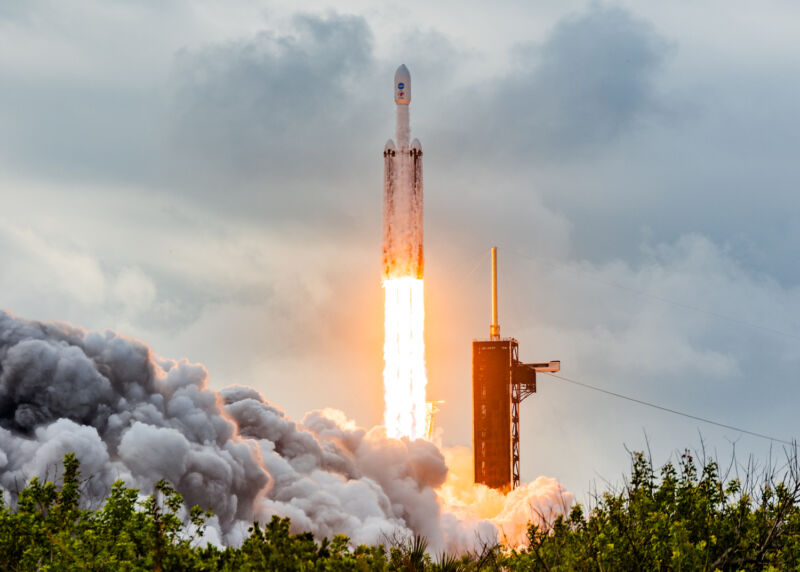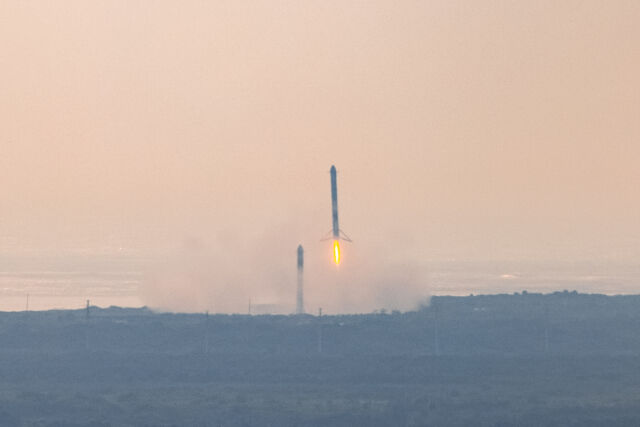

NASA just launched the Psyche mission—no one knows what it will find
source link: https://arstechnica.com/space/2023/10/nasa-is-about-to-launch-a-mission-of-pure-discovery-to-a-metal-asteroid/
Go to the source link to view the article. You can view the picture content, updated content and better typesetting reading experience. If the link is broken, please click the button below to view the snapshot at that time.
Into the unknown —
NASA just launched the Psyche mission—no one knows what it will find
Psyche is going to a metal world with plasma engines and lasers. It's not sci-fi.
Stephen Clark - Updated 10/13/2023, 5:56 PM

CAPE CANAVERAL, Florida—A roughly 3-ton spacecraft launched Friday from NASA's Kennedy Space Center in Florida to begin a six-year trip to an enigma in the asteroid belt, an unusual metallic world the size of Massachusetts that could hold clues about the formation of Earth and other rocky planets.
This mission, named Psyche, will survey its namesake asteroid for at least 26 months, moving to different altitudes to map the metal world with three science instruments. Like all missions exploring the Solar System, the Psyche spacecraft has a long journey to reach its destination, covering some 2.2 billion miles (3.6 billion kilometers) with the help of plasma engines.
No one knows what the spacecraft will find when it reaches the asteroid Psyche. The best images of the asteroid captured through telescopes only show Psyche as a fuzzy blob a few pixels wide. Scientists know it is dense and at least partially made of metal, primarily iron and nickel. The leading hypothesis among Psyche's science team is that the asteroid is likely a leftover remnant from the early history of the Solar System more than 4.5 billion years ago, the exposed core of a failed planet that may have had its outer layers of rock blasted away during collisions with other objects in that chaotic time.
“That’s the real excitement for me," said Lindy Elkins-Tanton, the mission's principal investigator from Arizona State University. "We don’t know what it’s going to look like. We’re going to be surprised. We’re going to learn something new about a fundamental building block for rocky planets, that is, their metal cores."
The first leg of Psyche's interplanetary voyage began at 10:19 am EDT (14:19 UTC) with liftoff of a SpaceX Falcon Heavy rocket from Florida. This was SpaceX's first Falcon Heavy launch for NASA, which plans to use the heavy-lifter for more critical missions in the coming years.
AdvertisementThe Psyche mission had a narrow window of just a few weeks to get off the ground, taking advantage of an alignment of the planets to enable its entry into the asteroid belt between Mars and Jupiter.
Psyche received a booming blastoff from the Falcon Heavy rocket, with 27 kerosene-burning engines providing an initial boost out of the atmosphere. The rocket's two reusable side boosters detached and returned to land at Cape Canaveral, where SpaceX will refurbish the rockets for another flight later this year on a Falcon Heavy rocket for the US Space Force. Then, notably, SpaceX will set them aside to fly a final time next October with a Falcon Heavy rocket on another NASA mission, Europa Clipper, to explore an icy moon of Jupiter.
After separation of the reusable side boosters, Falcon Heavy's core stage throttled up to burn another minute-and-a-half. Then an upper stage released from the core stage, which wasn't recovered, taking over for two engine firings to accelerate the Psyche spacecraft with enough velocity to escape the grip of Earth's gravity. The Psyche spacecraft separated from the rocket about an hour after liftoff, then extended its power-generating solar arrays to a span of 81 feet (about 25 meters) end to end. Ground controllers at NASA's Jet Propulsion Laboratory in California established a stable communication link with Psyche to verify all's good with the spacecraft.
“We said ‘goodbye’ to our spacecraft, the center of so many work lives for so many years—thousands of people and a decade,” said Elkins-Tanton in a statement. “But it’s really not a finish line; it’s a starting line for the next marathon. Our spacecraft is off to meet our asteroid, and we’ll fill another gap in our knowledge–and color in another kind of world in our solar system.”
Recommend
About Joyk
Aggregate valuable and interesting links.
Joyk means Joy of geeK
